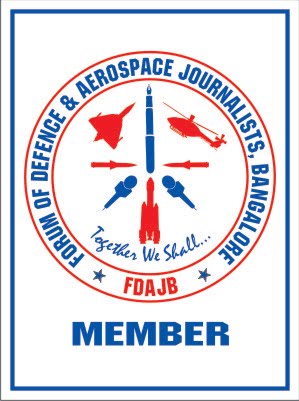Brig Gurdip Singh, Commandant, MEG&C greets Maj Gen Hla Shwe, Vice Adjutant General of the Myanmar Army in Bangalore on November 25.
Photo: Nagesh Polali
By Anantha Krishnan M
Express News Service
Photo: Nagesh Polali
By Anantha Krishnan M
Express News Service
Bangalore: They came. They saw. And, they got conquered, literally. There were
33 in all – five officers and 28 soldiers – strong and handsome. While boarding
a special flight back home on Saturday evening, ending their five-day sojourn
to Bangalore and Mysore, the Myanmar Army delegation had a definite
yeh-dil-maange-more-looks written all over. After all, it was not just the warmth of Madras Engineer
Group & Centre (MEG&C) that alone floored them. The beautiful lakes,
tempting jelabis, Mysore silk sarees and many more!
“Very nice city. This our first visit to Bangalore. We have come to India (Siliguri) before in 2008. We heard a lot about Bangalore. It's the IT city, you know? Nice lakes all around, beautiful people,” Maj Gen Hla Shwe, Vice Adjutant General of the Myanmar Army, told Express in broken English and bold Burmese accent. Stepping in with help and smile was Capt (Dr) Yan Nanny Tun, the interpreter-cum-liaison officer.
Maj Shwe says that Bangalore is very much like Maymyo City in Myanmar. “The weather is same like here. We are at home. Even the Indian Army is like Myanmar Army. Our cultures are similar. Your city is very famous in Myanmar,” he said. “We liked the chapatis, hot-hot jelabis and poori bhaji (laughs). Very tasty it is,” the Major said.
The Major found time to buy silk sarees from Mysore for his wife, while his team bought bagful of handicrafts. “We enjoyed Mysore. We bought horses, elephants and tigers (just toys!). We visited the famous St Philomena's Church too,” said Major Shwe, to whom even the Myanmar air force and navy also reports to.
While his boys had friendly bout of boxing and a game of hockey with the Indian Army team, the Major & Co were given a brief on the training aspects. According to Brig Gurdip Singh, MEG&C Commandant, the Myanmar delegation was a given a presentation on the philosophy of training in the Indian Army. “Some of the technological advancements in the training by the Indian Army, including NBC (nuclear, biological, chemical) warfare, were discussed. These kind of exchanges help increase the bonding between the two countries. We need more such exchanges with world armies,” Brig Gurdip said.
While, Express team was about the leave, Maj Shwe called back and said. “You know... I am a front-line soldier since I was 21 years. I will comeback to Bangalore again,” he said.
“Very nice city. This our first visit to Bangalore. We have come to India (Siliguri) before in 2008. We heard a lot about Bangalore. It's the IT city, you know? Nice lakes all around, beautiful people,” Maj Gen Hla Shwe, Vice Adjutant General of the Myanmar Army, told Express in broken English and bold Burmese accent. Stepping in with help and smile was Capt (Dr) Yan Nanny Tun, the interpreter-cum-liaison officer.
Maj Shwe says that Bangalore is very much like Maymyo City in Myanmar. “The weather is same like here. We are at home. Even the Indian Army is like Myanmar Army. Our cultures are similar. Your city is very famous in Myanmar,” he said. “We liked the chapatis, hot-hot jelabis and poori bhaji (laughs). Very tasty it is,” the Major said.
The Major found time to buy silk sarees from Mysore for his wife, while his team bought bagful of handicrafts. “We enjoyed Mysore. We bought horses, elephants and tigers (just toys!). We visited the famous St Philomena's Church too,” said Major Shwe, to whom even the Myanmar air force and navy also reports to.
While his boys had friendly bout of boxing and a game of hockey with the Indian Army team, the Major & Co were given a brief on the training aspects. According to Brig Gurdip Singh, MEG&C Commandant, the Myanmar delegation was a given a presentation on the philosophy of training in the Indian Army. “Some of the technological advancements in the training by the Indian Army, including NBC (nuclear, biological, chemical) warfare, were discussed. These kind of exchanges help increase the bonding between the two countries. We need more such exchanges with world armies,” Brig Gurdip said.
While, Express team was about the leave, Maj Shwe called back and said. “You know... I am a front-line soldier since I was 21 years. I will comeback to Bangalore again,” he said.
Copyright@The New Sunday Express
















































